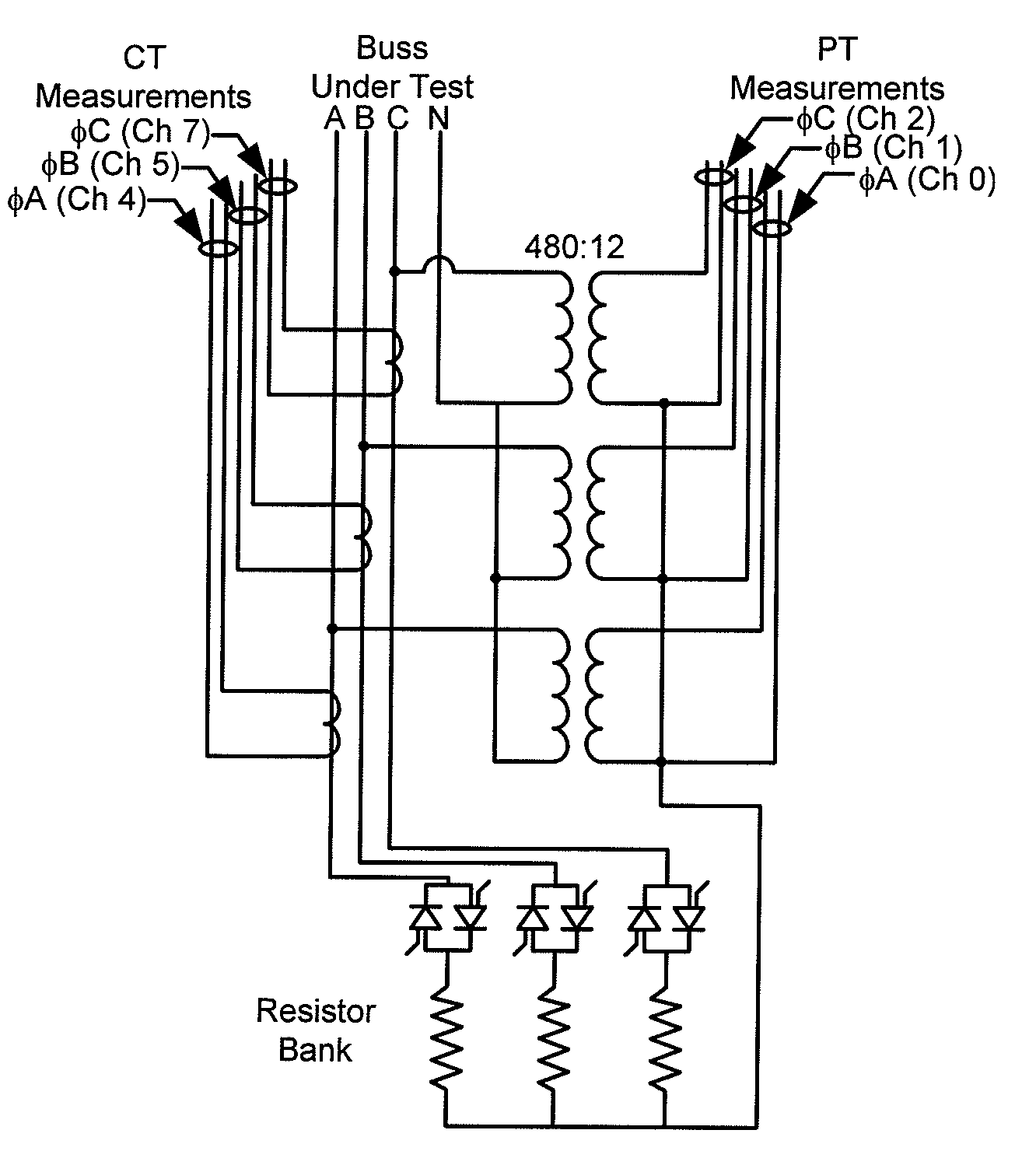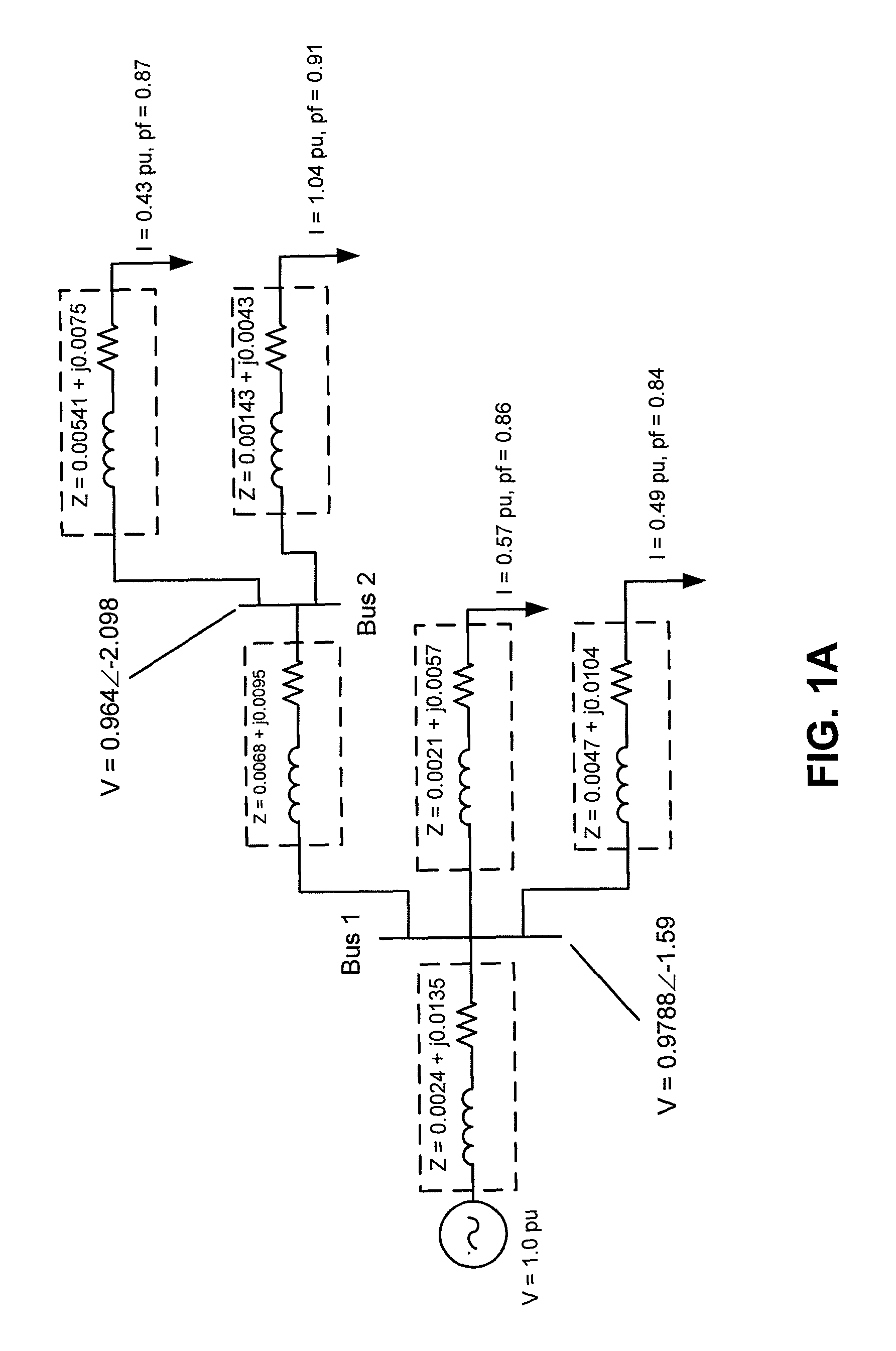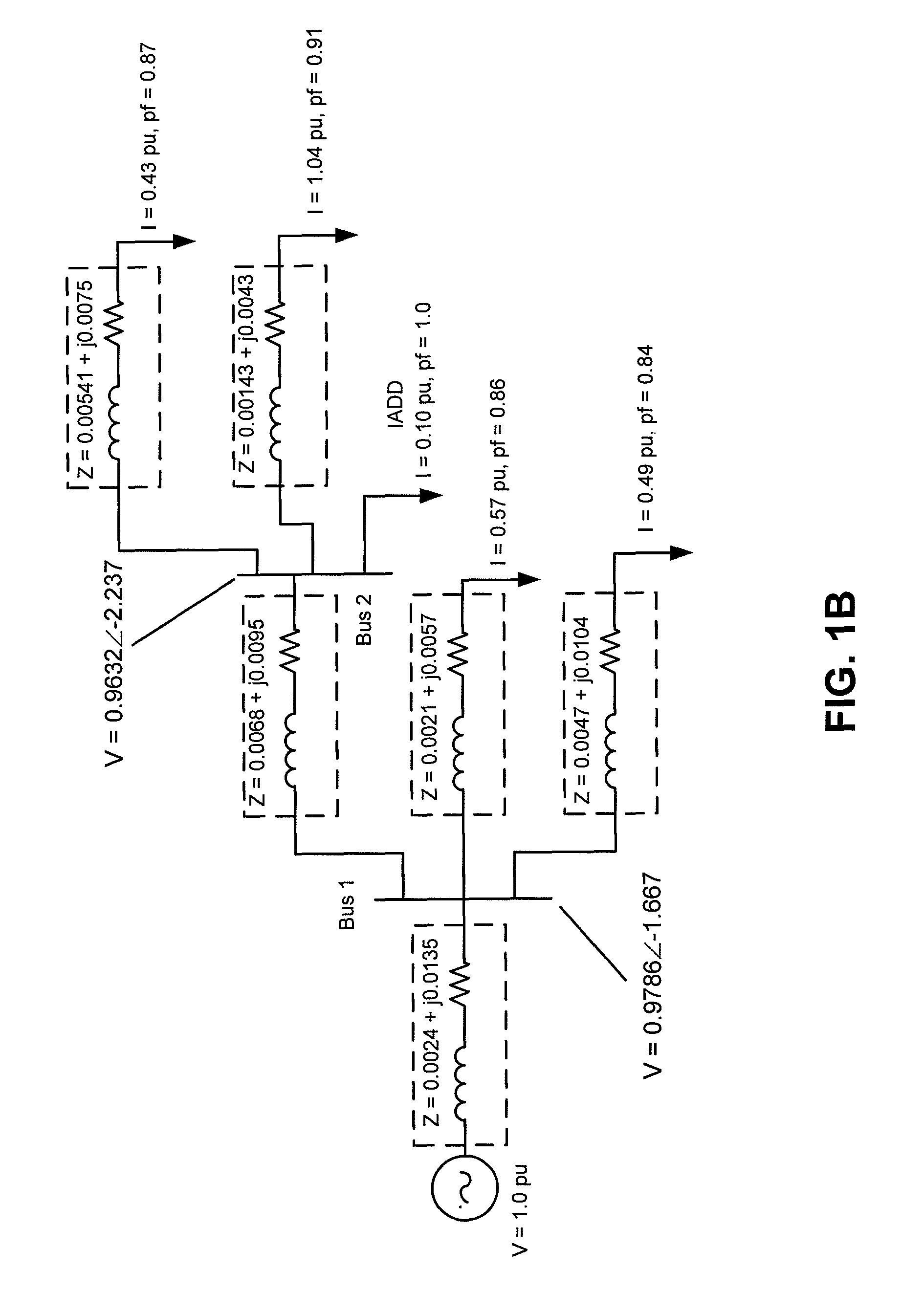Impedance-based arc fault determination device (IADD) and method
a fault determination device and arc technology, applied in short-circuit testing, impedence measurement, instruments, etc., can solve problems such as voltage variation, rms voltage change, and difficulty in defining these values from an intrinsic sense, so as to accurately determine the real-time load and accurately estimate the fault duty
- Summary
- Abstract
- Description
- Claims
- Application Information
AI Technical Summary
Benefits of technology
Problems solved by technology
Method used
Image
Examples
example 1
[0270]RIGGS HALL TEST SITE A: Upon completion of initial tests to determine viability of concept, the first IADD prototype was constructed in the PQIA lab. It is important to note here that this test was performed during the early stages of the IADD development, and the phase shift algorithms were less robust and non-linear transformers were used as the method of voltage detection.
[0271]The nameplate data on the transformer was given as 500 kVA, 12.47 kV-208 / 120Y V, with an impedance value of 5.66%. From industry tables for transformers of this type and size, the X / R ratio for this transformer is approximately 3.71. The cable from switchgear to the test panel in the PQIA laboratory was a 100 ft., four-wire run of 4 / 0 copper insulated conductor in aluminum conduit. From Table 9 of the NEC handbook, partially duplicated below, the impedance for this cable run was computed. The service impedance feeding the transformer was considered negligible because of the extremely high fault duty ...
example 2
Results
[0285]
Test #CurrentX / R Ratio 19593.182 29853.122 39733.106 49453.189 510472.901 69363.221 79473.131 89743.122 910183.0411010073.032119553.159129883.082139773.076149363.1371510043.050169843.0311710113.068189283.2081910183.026209573.136219633.1182210113.051239503.144249953.081259833.055Current StatisticsMean978.0046Standard Error6.1201Median976.6590Standard Deviation30.6006Sample Variance936.3965Kurtosis−0.5693Skewness0.2902Range118.3430Minimum928.3510Maximum1046.6940Confidence Level (95.0%)12.6313X / R StatisticsMean3.0988Standard Error0.0140Median3.1060Standard Deviation0.0702Sample Variance0.0049Kurtosis1.2636Skewness−0.5688Range0.3200Minimum2.9010Maximum3.2210Confidence Level (95.0%)0.0290
[0286]This test results in very stable, predictable results, with little variation from test to test. The test was also conducted at two different current levels and similar results were seen in both cases. Discrepancies in results have initially been attributed to unaccounted resistances in...
PUM
 Login to View More
Login to View More Abstract
Description
Claims
Application Information
 Login to View More
Login to View More - R&D
- Intellectual Property
- Life Sciences
- Materials
- Tech Scout
- Unparalleled Data Quality
- Higher Quality Content
- 60% Fewer Hallucinations
Browse by: Latest US Patents, China's latest patents, Technical Efficacy Thesaurus, Application Domain, Technology Topic, Popular Technical Reports.
© 2025 PatSnap. All rights reserved.Legal|Privacy policy|Modern Slavery Act Transparency Statement|Sitemap|About US| Contact US: help@patsnap.com



